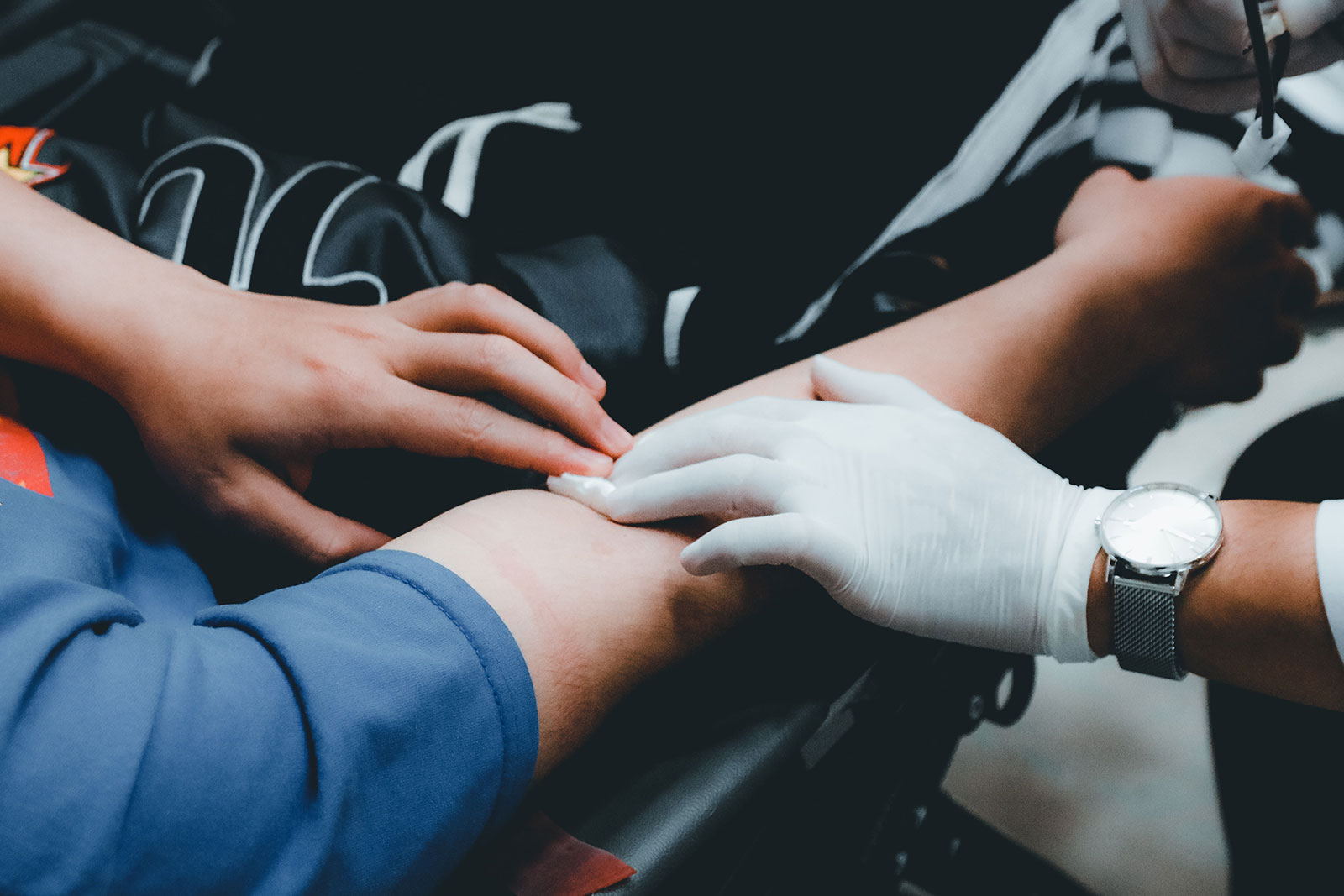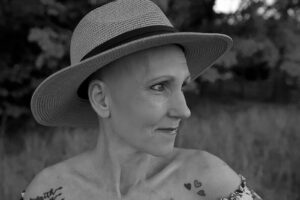The COVID-19 pandemic effectively canceled everything. From weddings to graduations to birthday celebrations and to something you probably haven’t ever thought about—plasma donations. While the thought of donating plasma may have never crossed your mind, plasma donations helped save my life.
I was 44 when I was first diagnosed with large follicular B-cell (non-Hodgkin) lymphoma.
My treatment regimen included radiation and R-CHOP chemotherapy, a cocktail of four drugs (cyclophosphamide, doxorubicin, vincristine and prednisone) and the monoclonal antibody rituximab. Many clear scans followed, and in 2017 I passed the five-year point cancer-free. This is the point at which you may be considered “cured.”
As we Midwesterners say, “Yeah, no.”
In 2020, my cancer came back. I assumed it could be treated the same way.
“Yeah, no.”
Given the recurrence of the same disease, my oncologist explained that I needed to start what’s called “salvage” chemotherapy—a much stronger protocol that uses different drugs and often given to patients after a disease doesn’t respond to standard therapy. My oncologist also suggested I should consider undergoing a follow-up bone marrow transplant, which would increase the likelihood of getting rid of the disease once and for all.
“No, yeah. Let’s do it.”
Post-transplant, things have gone—and are going—pretty well. A key reason for that is the plasma I received three times during the process.
While the thought of donating plasma may have never crossed your mind, plasma donations helped save my life.
I had what’s called an “autologous” transplant, meaning we used my own stem cells—no outside donor needed. Over four days, I had 12 injections at home, administered by my 20-year-old daughter (who seemed all too happy to help) to prepare my blood for what was to come.
Then came the installation of a central line: two tubes dangled out of my chest, through which nurses infused the incoming chemo and various IV drips, as well as removed blood.
Next, I underwent apheresis, where plasma was removed from my body by taking my blood, separating it into plasma and stem cells, freezing those cells for later and returning my blood back to me. A few days after that, I checked into the hospital for what would be 17 days.
The first six days I received intense chemo infusions. After the chemo, my frozen stem cells were thawed out and transplanted back into my body, and the waiting began. I waited for my white and red blood cell counts to recover. I waited for my platelet and hemoglobin counts to rise. I waited for those chemo side effects to kick in (and boy, did they). I waited on pins and needles (mostly needles) to see if I could avoid infection.
People who go through this treatment are at a high risk for bacterial and viral infections, as you become immunocompromised following the chemotherapy. As designed, the chemo kills off the bad things but takes some good things too, including your ability to fight off disease.

Although my results were thankfully mostly normal, there are always some deficiencies. The main issue I experienced was low platelet count (thrombocytopenia), which can cause bleeding in the lungs, gastrointestinal tract and brain. That’s when plasma came into the picture. I received three plasma transfusions to make sure my recovery stayed on track. And it worked.
I was sent home to continue my recovery two days ahead of schedule. While two days may seem small, after a 17-day hospital stay, it was a huge relief to sleep in my own bed.
If I don’t have plasma at the very least, I’m staying in the hospital longer due to a slower recovery, opening me up to greater risk of infection. If you’re one of those angels who goes above and beyond to donate plasma, I owe you one. Three, actually.
I’ve donated blood in the past, but now, as a cancer fighter, I can no longer do so (my daughter now donates on my behalf, I’m proud to say). Everyone is struggling with something. It may not be cancer, but you really don’t know what people may be quietly dealing with. You may not know who it is you are helping, but know that donors are, literally, lifesavers. Your donation could help someone like me during a critical plasma shortage in the country.
Donating plasma is safe and saves lives. In addition to cancer patients like me, plasma donations provide therapies for burn injury survivors, as well as those with hemophilia, rare and chronic conditions and immune deficiencies.
We all have our struggles, and while it may not be battling cancer, a plasma donation could mean the difference between life or death. If you’re eligible to donate, do me a favor and visit https://www.donatingplasma.org/ to find the nearest donation center near you.







